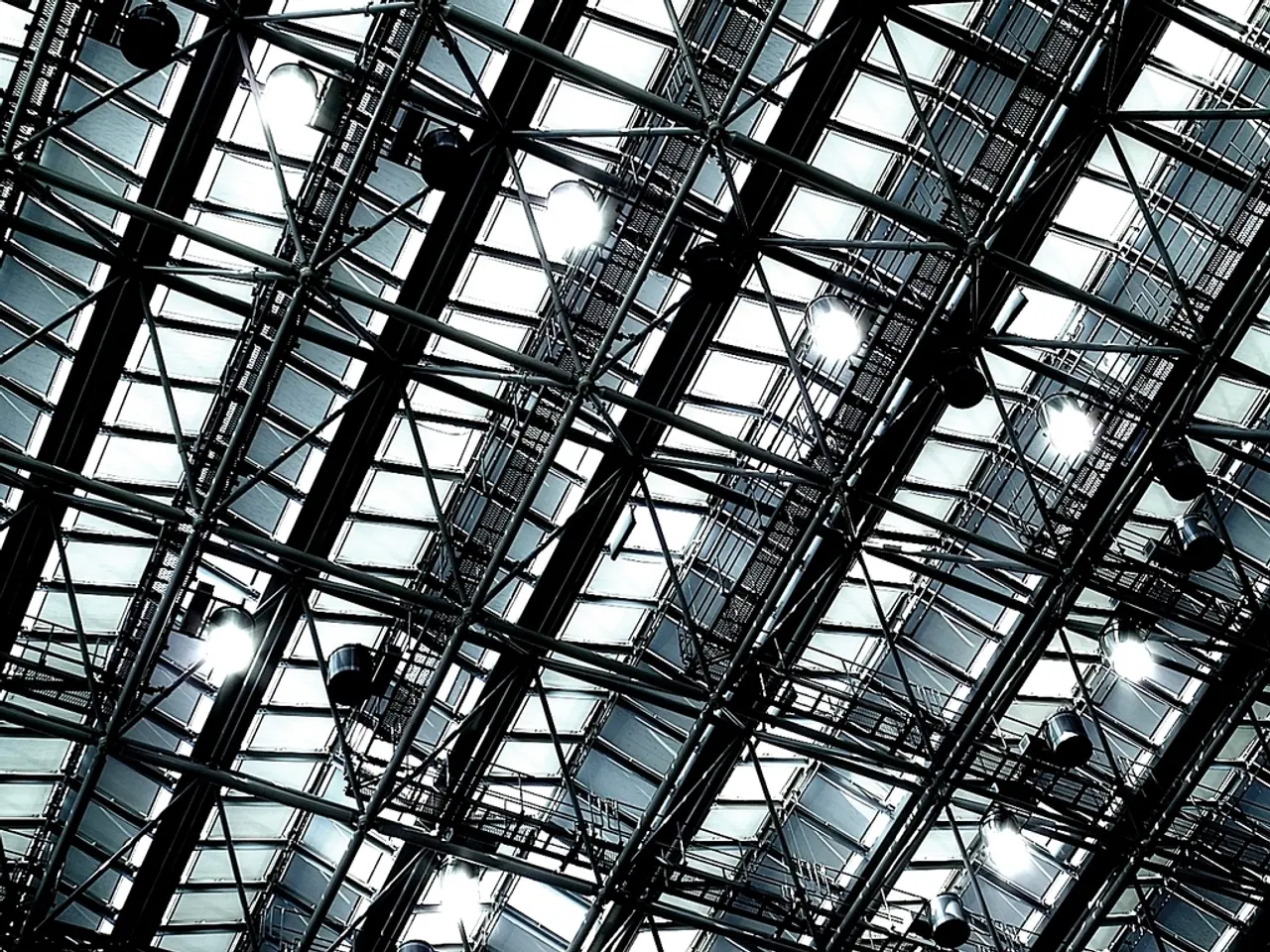Choosing the Right Rooflight Styles for Your Home: An Explanation of Different Rooflight Options
Rooflights, also known as skylights, can transform a home by bringing in natural light, making spaces feel brighter, larger, and adding architectural interest. In this article, we will explore the various types of rooflights available, their key features, and the factors to consider when making your selection.
Flat Glass Rooflights
Flat glass rooflights are ultra-slim, minimalist glazing units installed flush with the roof, providing a sleek, modern look with panoramic sky views. They emphasize a seamless flow between inside and outside and typically have slim aluminium frames or even frameless designs.
These rooflights maximize natural light penetration and can offer excellent thermal and acoustic insulation with low U-values (e.g., around 1.0 W/m²K) due to high-quality glazing and thermally broken profiles. They do not usually provide ventilation but require low maintenance and contribute to energy efficiency through insulation.
Roof Lanterns
Roof lanterns, by contrast, create a three-dimensional glazed structure rising above a flat roof, adding volume and a classic or statement centerpiece to the home extension. They visually create a ‘lantern’ effect with multiple framed glass panels meeting at ridges or apexes.
Lanterns are often chosen to enhance spatial quality and architectural grandeur, making rooms feel brighter and more spacious. They also provide sound insulation and thermal efficiency with high-performance glazing. Some models can incorporate ventilation options.
Key Differences
| Aspect | Flat Glass Rooflight | Roof Lantern | |-------------------------|----------------------------------------------|---------------------------------------------| | Design | Minimalist, flush/slimline glazing | Multi-faceted glass structure, raised above roof | | Spatial effect | Maximizes light, minimalist, panoramic views | Adds volume and acts as architectural focal point | | Thermal performance | Excellent, low U-values with modern glazing | Also excellent with high-performance glazing | | Aesthetic style | Modern, suits both modern and period properties | Classic or statement piece, suits varied styles | | Ventilation | Typically fixed, no ventilation | Some models can offer ventilation options | | Maintenance | Low maintenance | Generally low maintenance, depending on complexity | | Light output | Maximizes daylight from flat surface | Brings light from multiple angles and volume |
Other Rooflight Options
- Walk-on rooflights are structural glass panels that can be safely walked over and are commonly used on flat roofs or balconies.
- Certain rooflights are designed specifically for flat roofs, like lanterns, frameless panels, and walk-on glass.
- Frameless designs of flat glass rooflights are popular for their sleek appearance but may lack mechanical fixings and have issues with leaks and condensation.
- Ridge rooflights create a symmetrical, balanced look and are often used to highlight vaulted ceilings or open-plan spaces with a dramatic roof structure.
- Conservation rooflights are designed to blend with period properties and meet the requirements of listed buildings or homes in conservation areas.
Making Your Choice
When deciding on a rooflight, consider the style, spatial effect, and energy efficiency you want for your home addition. If minimalism and maximum light with a sleek, modern roofline are your goals, a flat glass rooflight may be the best choice. If you want to add architectural volume, create a striking centerpiece, and enhance a room’s spacious feel with a more traditional or dramatic design, opt for a roof lantern.
In areas where light is the priority and airflow isn't essential, a fixed rooflight is typically more affordable and lower maintenance. However, in spaces prone to humidity or heat build-up, like bathrooms, kitchens, and lofts, an opening rooflight is often the most practical choice.
With a variety of options available, finding the perfect rooflight for your home can greatly enhance its aesthetic appeal and functionality.
- Flat glass rooflights, characterized by their sleek, modern look and panoramic views, provide a seamless flow between indoors and outdoors.
- Roof lanterns create a three-dimensional glazed structure, rising above a flat roof, adding volume and a classic or statement centerpiece to a home extension.
- Flat glass rooflights, with their slim aluminum frames or even frameless designs, offer excellent thermal and acoustic insulation due to high-quality glazing and thermally broken profiles.
- Roof lanterns, with multiple framed glass panels meeting at ridges or apexes, visually create a ‘lantern’ effect and typify architectural grandeur, making rooms feel brighter and more spacious.
- Although flat glass rooflights do not usually provide ventilation, they contribute to energy efficiency through insulation, requiring low maintenance.
- Some roof lantern models offer ventilation options, making them suitable for spaces prone to humidity or heat build-up, like bathrooms, kitchens, and lofts.
- Walk-on rooflights are structural glass panels that can be safely walked over and are commonly used on flat roofs or balconies.
- Frameless designs of flat glass rooflights are popular for their sleek appearance, but they may lack mechanical fixings and have issues with leaks and condensation.
- Ridge rooflights create a symmetrical, balanced look and are often used to highlight vaulted ceilings or open-plan spaces with a dramatic roof structure.
- Conservation rooflights are designed to blend with period properties and meet the requirements of listed buildings or homes in conservation areas.
- When making your rooflight selection, consider the style, spatial effect, and energy efficiency desired for your home addition.
- A fixed rooflight is typically more affordable and lower maintenance solution in areas where light is the priority and airflow isn't essential, while an opening rooflight is often the most practical choice for spaces with humidity or heat build-up issues.




